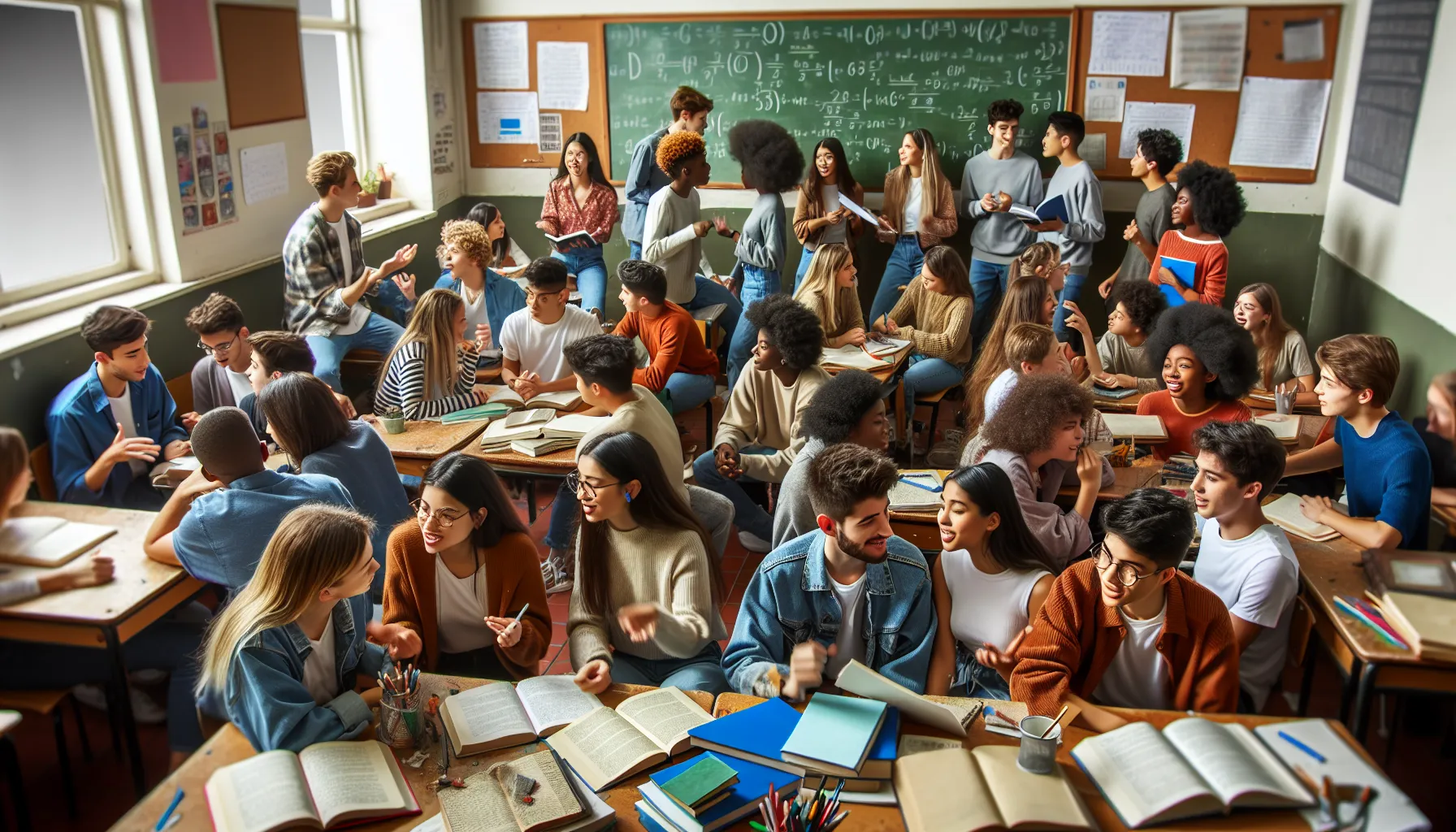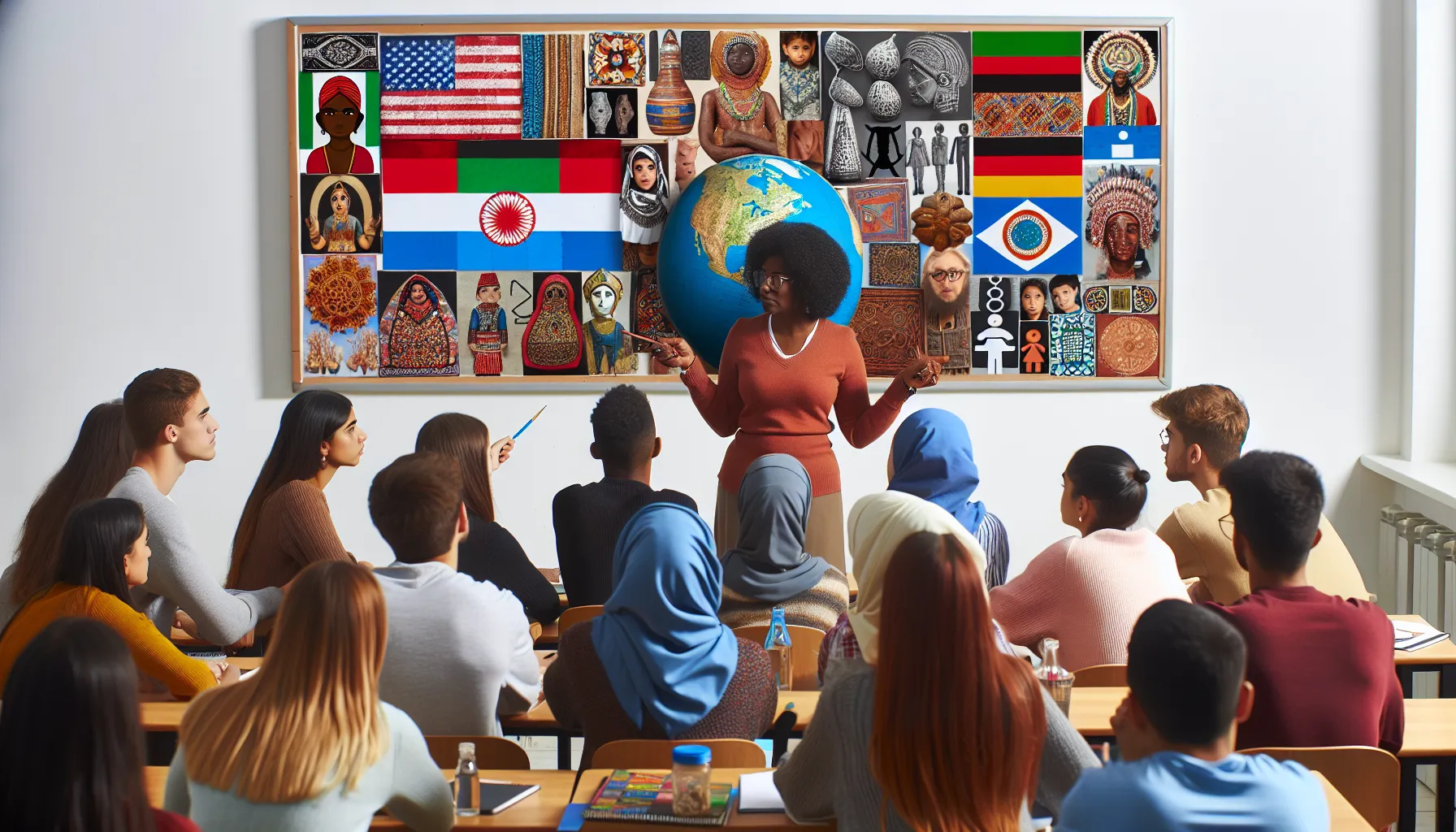Welcome to this IELTS Reading practice test focused on “The role of education in fostering cultural empathy.” This test is designed to help you prepare for the IELTS Reading section while exploring the importance of education in developing cross-cultural understanding and empathy. Let’s dive into the passages and questions to enhance your reading skills and cultural awareness.
Table Of Contents
- Passage 1 (Easy Text)
- The Importance of Cultural Empathy in Education
- Questions 1-5
- Questions 6-10
- Passage 2 (Medium Text)
- Bridging Cultural Divides Through Education
- Questions 11-14
- Questions 15-19
- Passage 3 (Hard Text)
- The Paradigm Shift: Education as a Catalyst for Global Cultural Empathy
- Questions 20-23
- Questions 24-26
- Questions 27-30
- Answer Key
- Passage 1
- Passage 2
- Passage 3
- Conclusion
Passage 1 (Easy Text)
The Importance of Cultural Empathy in Education
Cultural empathy is becoming increasingly important in our globalized world. It refers to the ability to understand and share the feelings of people from different cultural backgrounds. Educational institutions play a crucial role in fostering this skill among students.
Schools and universities are uniquely positioned to expose students to diverse perspectives and experiences. Through multicultural curricula, international exchange programs, and diverse student bodies, educational settings provide opportunities for students to interact with peers from various cultural backgrounds.
One effective method of developing cultural empathy is through experiential learning. This approach involves immersing students in different cultural contexts, either through travel or simulated experiences. By directly engaging with unfamiliar customs and traditions, students can develop a deeper understanding and appreciation for cultural differences.
Moreover, incorporating literature and media from diverse cultures into the curriculum can help students gain insights into different worldviews. Reading multicultural literature allows students to step into the shoes of characters from various backgrounds, fostering empathy and understanding.
Teachers also play a vital role in this process. By modeling cultural sensitivity and encouraging open discussions about cultural differences, educators can create a classroom environment that values diversity and promotes empathy.
 Diverse Students in Classroom
Diverse Students in Classroom
Questions 1-5
Do the following statements agree with the information given in the passage?
Write:
TRUE if the statement agrees with the information
FALSE if the statement contradicts the information
NOT GIVEN if there is no information on this
- Cultural empathy is becoming less important in today’s world.
- Schools and universities are well-positioned to expose students to diverse perspectives.
- Experiential learning is the only effective method for developing cultural empathy.
- Reading multicultural literature can help students understand different worldviews.
- All teachers are naturally skilled at modeling cultural sensitivity.
Questions 6-10
Complete the sentences below.
Choose NO MORE THAN TWO WORDS from the passage for each answer.
-
Cultural empathy is the ability to understand and share the feelings of people from different __ backgrounds.
-
Educational institutions use __ curricula to expose students to diverse perspectives.
-
__ programs provide opportunities for students to interact with peers from various cultures.
-
Experiential learning involves immersing students in different __ contexts.
-
Teachers can create a classroom environment that values diversity by encouraging __ about cultural differences.
Passage 2 (Medium Text)
Bridging Cultural Divides Through Education
In an era of increasing global interconnectedness, the role of education in fostering cultural empathy has become more critical than ever. Educational institutions are tasked with the responsibility of preparing students to navigate a world where cross-cultural interactions are the norm rather than the exception. This preparation goes beyond mere academic knowledge and extends to the development of intercultural competence.
One of the primary ways education contributes to cultural empathy is through the promotion of cultural literacy. This involves not only learning about different cultures but also understanding the nuances of cultural practices, beliefs, and values. By incorporating diverse perspectives into the curriculum, schools can help students develop a more holistic worldview that appreciates the richness of human diversity.
Language education plays a pivotal role in this process. Learning a foreign language is not just about memorizing vocabulary and grammar; it’s an immersive experience into another culture. As students grapple with new linguistic structures, they also gain insights into different ways of thinking and expressing ideas. This linguistic journey often leads to a greater appreciation for cultural differences and similarities.
Furthermore, educational institutions are increasingly recognizing the importance of experiential learning in fostering cultural empathy. Study abroad programs, international exchanges, and virtual collaborations with students from other countries provide invaluable opportunities for direct cross-cultural engagement. These experiences challenge students’ preconceptions and encourage them to view the world from multiple perspectives.
The role of educators in this process cannot be overstated. Teachers who are culturally aware and sensitive can create classroom environments that celebrate diversity and encourage open dialogue about cultural differences. By modeling intercultural communication skills and facilitating discussions on global issues, educators can help students develop the empathy and understanding necessary for successful cross-cultural interactions.
However, fostering cultural empathy through education is not without its challenges. Ethnocentrism and cultural stereotypes can be deeply ingrained, requiring conscious effort to overcome. Educational institutions must be proactive in addressing these barriers, providing training for educators and implementing curricula that challenge students to examine their own cultural biases.
In conclusion, education plays a crucial role in fostering cultural empathy by providing knowledge, experiences, and skills necessary for navigating our diverse world. As educational institutions continue to evolve their approaches to cultural education, they contribute to the development of globally-minded citizens capable of bridging cultural divides and promoting mutual understanding.
Questions 11-14
Choose the correct letter, A, B, C, or D.
-
According to the passage, the role of education in fostering cultural empathy has become:
A) Less important
B) More critical
C) Unchanged
D) Controversial -
Cultural literacy involves:
A) Only learning about different cultures
B) Understanding cultural practices, beliefs, and values
C) Memorizing facts about other countries
D) Focusing solely on one’s own culture -
Learning a foreign language is described as:
A) A purely academic exercise
B) An immersive experience into another culture
C) Unnecessary for cultural empathy
D) Only about memorizing vocabulary and grammar -
The passage suggests that ethnocentrism:
A) Should be encouraged in education
B) Is easy to overcome
C) Requires conscious effort to overcome
D) Is not a significant barrier to cultural empathy
Questions 15-19
Complete the summary below.
Choose NO MORE THAN TWO WORDS from the passage for each answer.
Education plays a crucial role in developing cultural empathy by promoting (15) __ and providing opportunities for cross-cultural engagement. Language education offers an (16) __ into other cultures, while study abroad programs and international exchanges allow for direct (17) __. Teachers who model (18) __ can create classroom environments that celebrate diversity. However, educational institutions must address challenges such as (19) __ and cultural stereotypes to effectively foster cultural empathy.
Passage 3 (Hard Text)
The Paradigm Shift: Education as a Catalyst for Global Cultural Empathy
In the contemporary landscape of increasingly interconnected societies, the role of education in fostering cultural empathy has undergone a significant paradigm shift. No longer confined to the traditional boundaries of national curricula, educational institutions are now at the forefront of cultivating a global consciousness that transcends geographical and cultural divides. This evolution in educational philosophy recognizes the imperative of preparing students not just for academic success, but for meaningful engagement in a world characterized by cultural diversity and complex international relations.
The concept of cultural empathy, as facilitated through education, encompasses a multifaceted approach that goes beyond mere tolerance or superficial understanding of different cultures. It involves the development of a profound cognitive and emotional capacity to comprehend, relate to, and effectively interact with individuals from varied cultural backgrounds. This heightened level of intercultural competence is increasingly viewed as a fundamental skill in the 21st century, essential for navigating the complexities of global citizenship and professional environments.
One of the key strategies employed in this educational paradigm is the integration of culturally responsive pedagogy. This approach acknowledges and leverages the diverse cultural experiences and perspectives that students bring to the classroom, creating an inclusive learning environment that validates and incorporates various cultural frameworks. By doing so, it not only enhances the learning experience for students from diverse backgrounds but also exposes all students to a rich tapestry of cultural viewpoints, fostering a more nuanced understanding of global issues.
Moreover, the advent of digital technology has revolutionized the potential for cross-cultural education. Virtual exchange programs and collaborative online international learning (COIL) initiatives have opened up unprecedented opportunities for students to engage in meaningful intercultural dialogues without the constraints of physical mobility. These platforms facilitate real-time interactions with peers from different parts of the world, allowing for the exchange of ideas, collaborative problem-solving, and the development of global competencies in a digitally mediated environment.
The role of education in cultivating cultural empathy also extends to the realm of critical cultural consciousness. This involves encouraging students to critically examine their own cultural assumptions and biases, as well as the broader societal structures that perpetuate cultural stereotypes and inequalities. By fostering this level of self-reflection and critical analysis, education can play a transformative role in dismantling ethnocentric worldviews and promoting a more equitable and inclusive global society.
However, the implementation of such a comprehensive approach to cultural empathy in education is not without its challenges. It requires a fundamental shift in educational policies, curriculum design, and teacher training programs. Educators must be equipped with the necessary intercultural competencies and pedagogical skills to effectively facilitate cross-cultural learning experiences. Furthermore, there is a need for ongoing research and assessment to evaluate the efficacy of various approaches and to continually refine educational strategies in response to the evolving global landscape.
In conclusion, the role of education in fostering cultural empathy represents a critical frontier in preparing students for the complexities of a globalized world. By embracing this expanded educational mandate, institutions have the potential to nurture a generation of globally minded individuals capable of bridging cultural divides, promoting mutual understanding, and contributing to the resolution of global challenges. As we continue to navigate the intricacies of cultural diversity in an interconnected world, the transformative power of education in cultivating empathy and intercultural competence remains an invaluable asset in shaping a more harmonious global society.
Questions 20-23
Choose the correct letter, A, B, C, or D.
-
According to the passage, the role of education in fostering cultural empathy has:
A) Remained unchanged over time
B) Become less important in recent years
C) Undergone a significant paradigm shift
D) Been limited to national curricula -
Cultural empathy, as facilitated through education, is described as:
A) A superficial understanding of different cultures
B) A multifaceted approach involving cognitive and emotional capacity
C) A skill that is not essential in the 21st century
D) An approach limited to tolerance of other cultures -
Culturally responsive pedagogy:
A) Ignores the cultural experiences of students
B) Focuses only on majority cultures
C) Creates an exclusive learning environment
D) Leverages diverse cultural experiences and perspectives -
The passage suggests that digital technology has:
A) Limited opportunities for cross-cultural education
B) Replaced the need for physical mobility in cultural exchanges
C) Revolutionized the potential for cross-cultural education
D) Had no impact on cultural empathy in education
Questions 24-26
Complete the sentences below.
Choose NO MORE THAN THREE WORDS from the passage for each answer.
-
Virtual exchange programs and COIL initiatives allow students to engage in __ without physical mobility constraints.
-
Education plays a role in cultivating __, which involves examining one’s own cultural assumptions and biases.
-
Implementing a comprehensive approach to cultural empathy in education requires a fundamental shift in __, curriculum design, and teacher training programs.
Questions 27-30
Do the following statements agree with the claims of the writer in the passage?
Write:
YES if the statement agrees with the claims of the writer
NO if the statement contradicts the claims of the writer
NOT GIVEN if it is impossible to say what the writer thinks about this
-
Cultural empathy is a skill that can be fully developed through traditional classroom learning alone.
-
Virtual exchange programs are more effective than physical exchange programs in fostering cultural empathy.
-
Educators need specific training to effectively facilitate cross-cultural learning experiences.
-
The role of education in fostering cultural empathy is likely to become less important in the future.
Answer Key
Passage 1
- FALSE
- TRUE
- FALSE
- TRUE
- NOT GIVEN
- cultural
- multicultural
- International exchange
- cultural
- open discussions
Passage 2
- B
- B
- B
- C
- cultural literacy
- immersive experience
- cross-cultural engagement
- intercultural communication skills
- ethnocentrism
Passage 3
- C
- B
- D
- C
- meaningful intercultural dialogues
- critical cultural consciousness
- educational policies
- NO
- NOT GIVEN
- YES
- NO
Conclusion
This IELTS Reading practice test has explored the crucial role of education in fostering cultural empathy. By engaging with these passages and questions, you’ve not only honed your reading skills but also gained insights into the importance of cross-cultural understanding in our increasingly globalized world. Remember to apply these critical reading strategies in your IELTS preparation and future academic endeavors.
For more IELTS practice and tips on developing intercultural communication skills, check out our article on the role of intercultural communication in global education. Additionally, to explore how digital literacy impacts cultural understanding, read our piece on the importance of cultural literacy in the digital age.
Keep practicing and expanding your cultural horizons. Good luck with your IELTS preparation!



